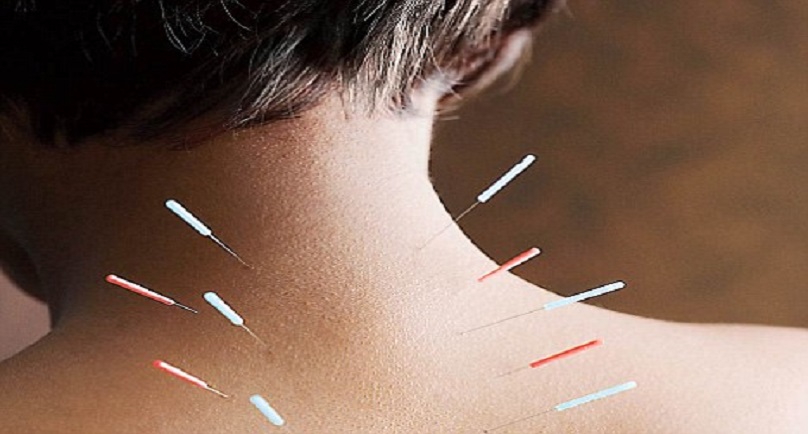Image:Acupuncture
![]()
By Kathryn Doyle
(Reuters Health) – Acupuncture sessions and Alexander Technique lessons both seem to improve the symptoms of chronic neck pain after one year, according to a new study.
Alexander Technique involves hands-on lessons for self-care in everyday activities, aimed at reducing poor posture, excess muscle tension, poor coordination, stress or pain.
Single interventions for chronic neck pain do not on average provide long-term benefits, so the positive results with acupuncture and Alexander Technique lessons were surprising, said lead author Hugh MacPherson of the University of York in the U.K.
“Treatment was completed at around four to five months after entering the trial,” MacPherson told Reuters Health by email. “Then at 12 months, well after the end of treatment, we found sustained reductions in pain of around 30 percent on average for both those receiving acupuncture or Alexander Technique lessons.”
Both methods help patients increase their “self-efficacy,” that is, their ability to reduce their pain levels using self-care methods that do not involve medication, he said.
The study included 517 people with neck pain that had lasted at least three months, and an average of six years. Their neck pain was rated based on questionnaires at the outset, three months in, six months in, and 12 months after the study began.
The participants were randomly assigned to 12 50-minute acupuncture sessions, 20 30-minute one-on-one Alexander Technique lessons, or usual care, which included prescription pain medication, doctors visits and physical therapy.
The acupuncture or Alexander sessions were offered within the first five months of the study, and participants had the option of paying privately for additional sessions thereafter.
On average, acupuncture participants attended 10 of their 12 sessions and Alexander participants attended 14 of their 20 sessions.
Based on the symptom questionnaires, pain had reduced by more than 30 percent from the beginning of the study to the 12 months point for those in both treatment groups, the authors reported in the Annals of Internal Medicine.
There no serious adverse events related to either intervention, according to the authors.
Stuart McClean of the University of the West of England in Bristol, U.K., who was not involved in the study, told Reuters Health that chronic pain can develop through fear avoidance of movement and pain, but also because patients catastrophize, and they don’t know how to ease their own pain.
Acupuncture and Alexander Technique probably work differently to reduce pain, but they may be similar in that they help patients change past behaviors and habits and lead towards improved coping strategies and self-care, he said.
There was some benefit in both groups due to “non-specific” components of treatment, or placebo effect, as occurs with any intervention, MacPherson said.
“However the long-term nature of the benefits are not typical of a placebo response, and the data on self-efficacy provide a better explanation of these long-term benefits,” he said.
Both treatments are usually paid for out-of-pocket, although they are covered by insurance or national healthcare systems in some countries, he said.
Patients should look for a licensed or registered practitioner for these therapies, he said.
“No other single treatment is known to provide long-term benefits,” MacPherson said. “However there is evidence that manual therapy when combined with a tailored exercise program can provide similar long-term benefits.”
SOURCE: http://bit.ly/1i46lF7 Annals of Internal Medicine, online November 2, 2015.
Copyright 2015 Thomson Reuters. Click for Restrictions.


